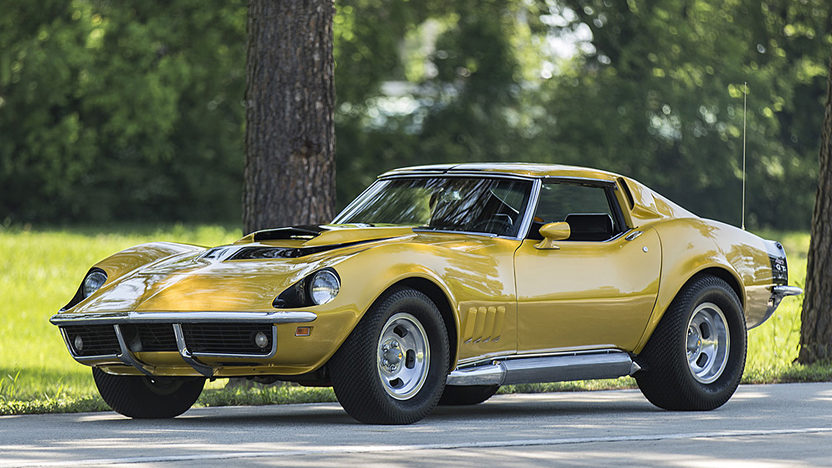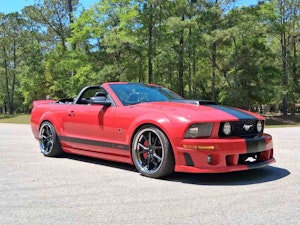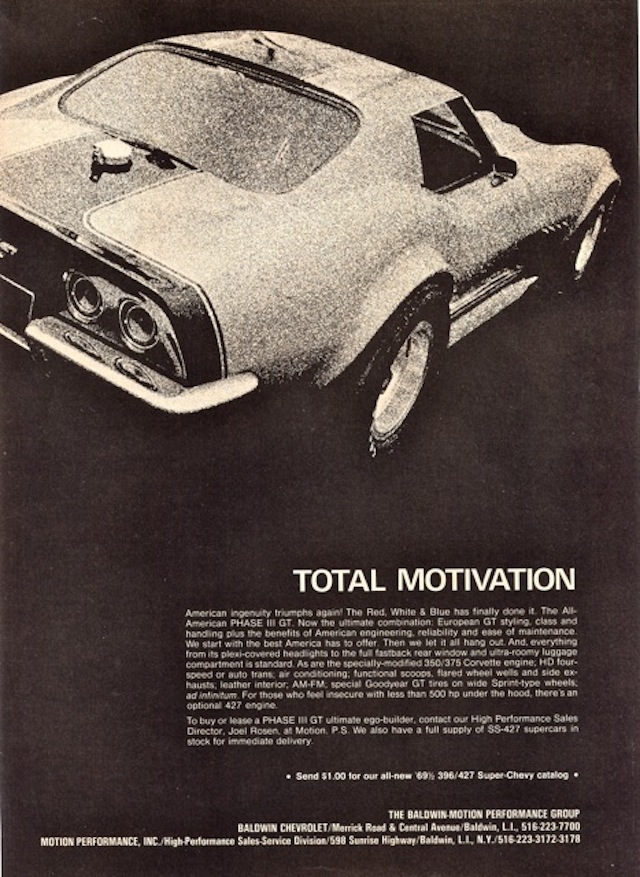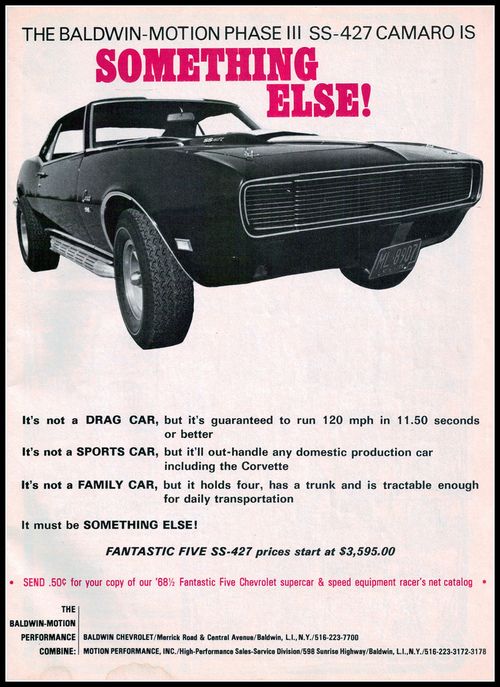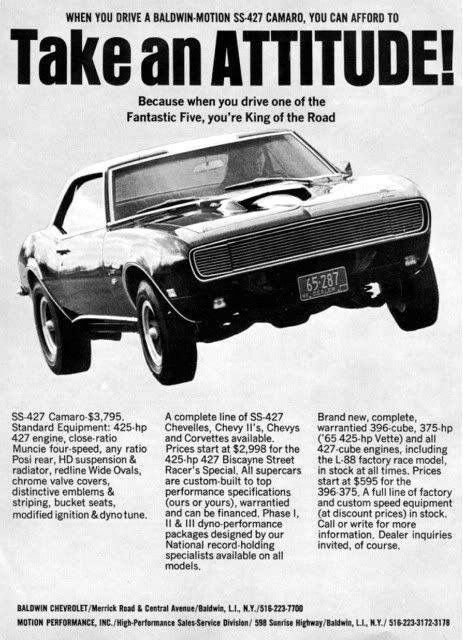Media | Articles
Baldwin-Motion Supercars
Among the dealership-based supercar builders of the 1960s and ’70s—including Yenko, Nickey, Grand Spaulding Dodge, and Royal Pontiac (to name a few)—the most outrageous builder of true street terrors was Baldwin-Motion. Taking nothing away from the Grand Spaulding 1967 Dart GSS or Yenko COPO Camaro, the Baldwin-Motion cars were on a whole different level with their made-to-order custom builds.
Most performance enthusiasts in the ‘60s and ‘70s would purchase a new muscle car, bring it home, and immediately add a set of wheels along with a bevy of speed parts meant to enhance performance and make the car their own. These homespun transformations, usually carried out right after the car was purchased new, are known as “Day Two” cars in today’s muscle car market.
However, there was a learning curve with these back-alley builds. Some projects went backward in performance when these modifications and upgrades were not professionally executed. Such modifications also could negatively affect a car’s handling, drivability, and value. The demand for proper, professional Day Two experts emerged.
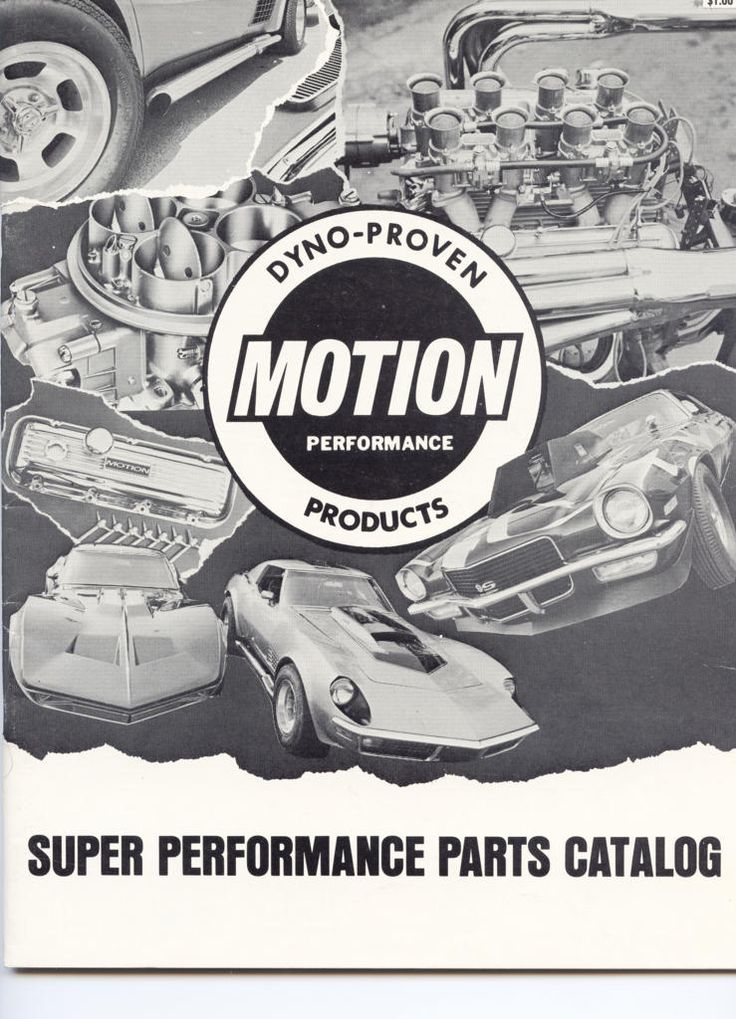
Most of the supercar dealerships of the muscle era essentially provided a stock-bodied vehicle with plenty of extra horses, using either a highly tuned factory power plant or a high-performance crate engine. Baldwin-Motion took new Chevrolets, sold through Baldwin Chevrolet in Baldwin, New York (Long Island), and then delivered them to Joel Rosen’s Motion Performance speed shop (also in Baldwin), where they became street-legal, turn-key drag cars. The partnership between the two companies would allow any client to buy a built-to-order street machine, limited only by the buyer’s imagination and financial resources. Some of these cars even came with a written, money-back, quarter-mile performance guarantee.
Marketplace
Buy and sell classics with confidence
The partnership’s humble beginnings set it apart from other contemporary supercar dealerships. Rosen’s Motion Performance shop had a strong reputation among East Coast racers, and he had successfully campaigned a 289 Cobra on the drag strip. Rosen later built a 1963 Chevrolet Corvette and raced across multiple venues: drag racing, hill climbs, gymkhanas, rallies, and ice races. Despite this strong performance resume, Rosen had no contacts with General Motors or any performance subsidiaries affiliated with the automaker.
Nevertheless, customers were already coming to Rosen for speed equipment and knew of him from his racing activities, and he soon had an idea to create a car that was ready to misbehave from the moment the owner signed on the dotted line.
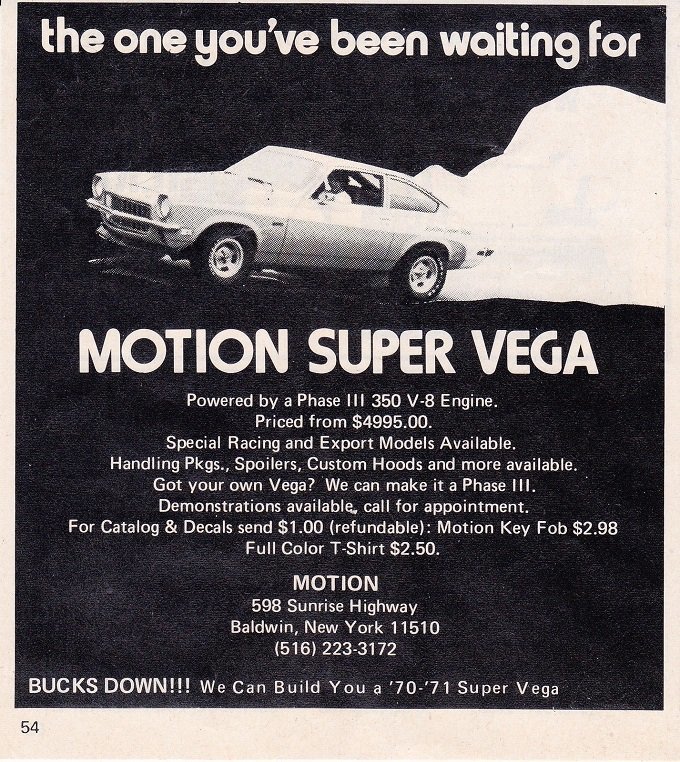
Baldwin was a family-run Chevrolet dealership, and it had no reputation or previous dealings in the high-performance car business. But by 1966 Rosen and Ed Simonin (the general manager at Baldwin) formed a partnership that would allow any customer to have a Camaro, Chevelle, or Corvette built into a killer street machine at Motion Performance and delivered through Baldwin Chevrolet. The cars could even be financed by the General Motors Acceptance Corporation (GMAC).
Baldwin-Motion cars came complete with dyno-proven engine, suspension, and drivetrain upgrades that worked on the street, drag strip, and even a road course. Professionally-applied special paint and body modifications, along with custom wheels, set these cars apart visually from anything else on the street. Crucially, Baldwin-Motion cars were all totally custom and built-to-order, so each example was unique.
The most valuable Baldwin-Motion cars are Phase III Corvettes and Camaros. Roughly 10 of the Phase III Corvettes were produced between 1969–71. Phase III and SS cars had unique exterior trim, including Motion badging, as well as custom fiberglass body treatments like stinger hoods and unique paint treatment. These cars also offered an options list that included a wide array of high-performance engines, transmissions, and chassis. Popular options included Holley three-barrel carburetors, aluminum high-rise intakes, Phase II CD ignitions, Sun Super Tachometers and gauge sets, Super-Bite suspension components, scooped hoods, a variety of aftermarket magnesium wheels, headers with chrome side exhaust, and Hone Overdrive transmissions, which allowed high-speed cruising with a variety of ultra-low rear gears set options.
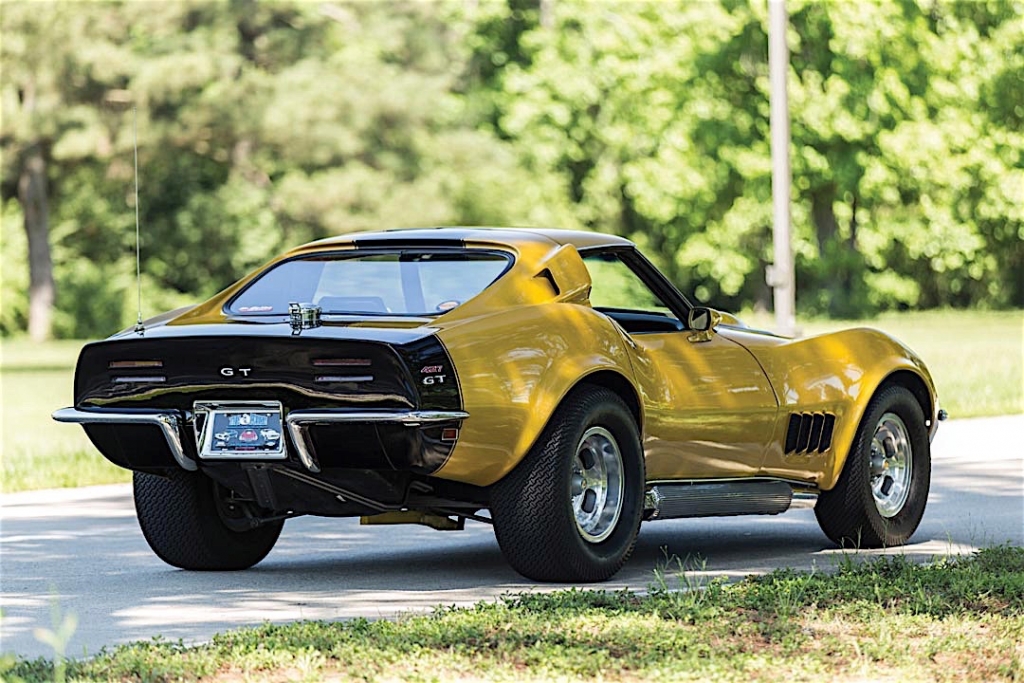
These cars carried the now-famous Motion Performance guarantee: “We think so much of our Phase III Supercars that we guarantee they will turn at least 120 mph in 11.50 seconds or better with a [Motion Performance-approved] driver on an AHRA or NHRA-sanctioned drag strip.” Rosen claims to have never had a claim on that guarantee.
Rosen marketed the body kits out of his speed shop, along with the dyno-proven parts combinations, which customers could purchase through Motion mail order catalogs. Advertising in the catalogs, the brainchild of Performance Media’s Marty Schorr, of CARS Magazine, was just as high-powered as the cars that Rosen built. Schorr was also highly involved in product development and marketing. His promotion contributed significantly to securing the cars’ reputation in the muscle supercar market.
Motion Performance built roughly 500 cars from 1967 to 1974. Rosen’s personal records show that the cars were shipped all around the world, including Kuwait, Mexico, Norway, and Puerto Rico. Original Baldwin-Motion cars are in high demand with collectors and rarely change hands publicly. The last time a true Baldwin-Motion car crossed the auction block was at the Mecum in Kissimmee, Florida, in January 2014. The car was a 1969 Chevrolet Corvette Phase III built at Motion and sold through Baldwin. It sold for $140,000, short of its presale estimate of $225,000–$275,000.
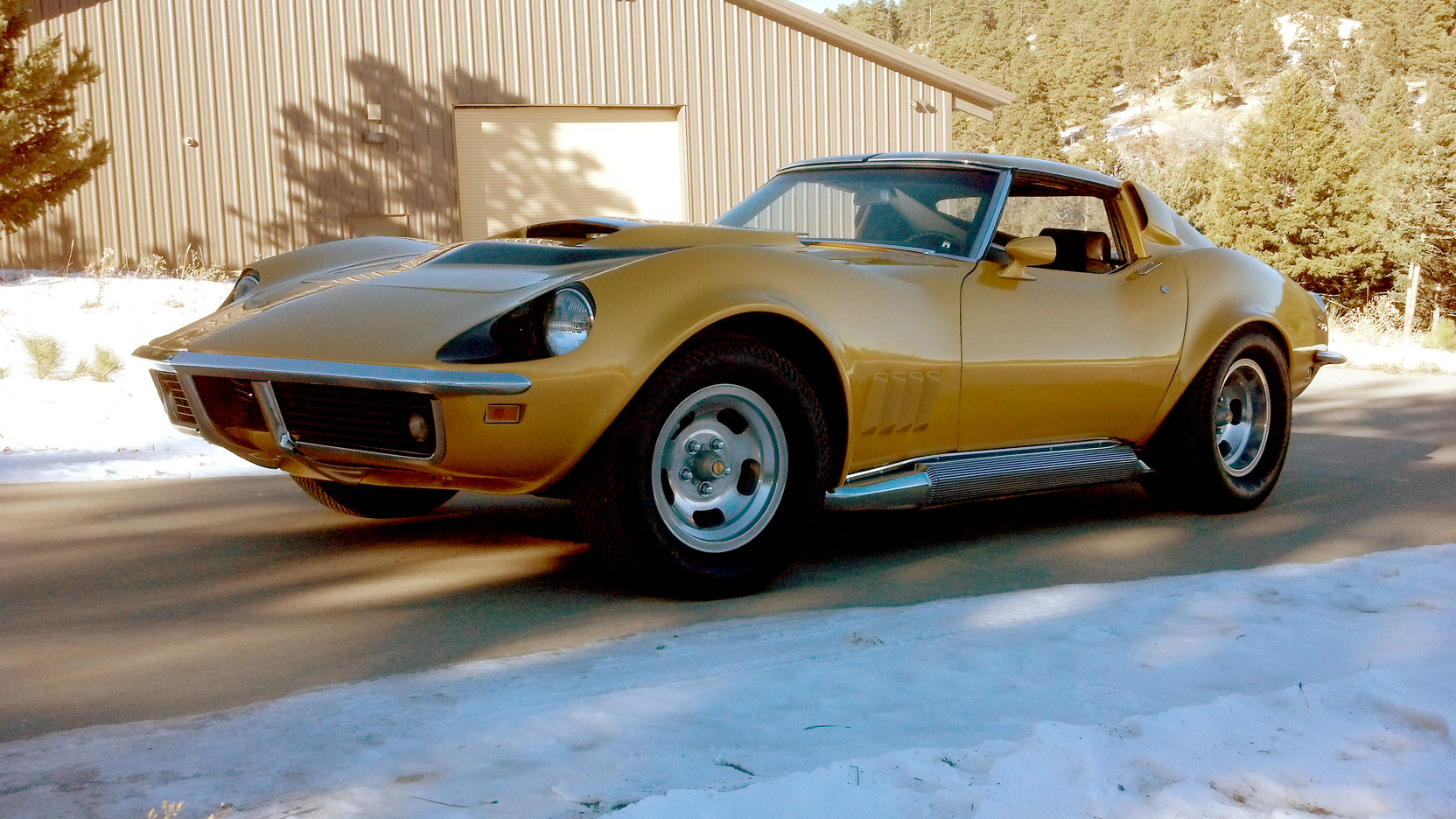
Rosen’s operation thrived into the early 1970s, when the OPEC oil embargo in late 1973 initiated the beginning of the end. The Environmental Protection Agency (EPA) put tougher constraints on automakers to reduce exhaust emissions, and buyers wanted cars with better fuel mileage. Baldwin Chevrolet shuttered in 1974, ending many years of success with Rosen. His latest addition to the Motion Supercar menu was the Motion Super Vega, which would mark the end of days for these builds.
As Hemmings noted, Car Craft magazine ran an article in 1974 about Rosen’s 454 Super Vega, titled “King Kong Lives on in Long Island.” The article came to the EPA’s attention and lit a serious fire, one from which Motion Performance couldn’t escape. The Department of Justice sent Rosen a cease-and-desist, directing him to no longer build modified street cars that flouted factory emissions standards. For each emission device he disabled or removed, Rosen would be fined $10,000, and that meant the V-8 Vega would cost $50,000 per car in government fines. Rosen eventually received a $500 fine and complied with the EPA mandate. Motion Performance continued to build special-order vehicles, but the agreement put a crimp on business, requiring it to invoice each order as “For Export” or “For Off Road Use Only.” The stellar combination of on-road reliability and drag-strip, road-course prowess that once made Motion Performance a hot commodity was dead in the water.
Rosen had other side projects in the 1980s, but eventually he retired to Florida about 25 years ago. He now does consulting work for several diecast car manufacturers, who reproduce miniatures of his cars, and also helps collectors verify and document surviving Baldwin-Motion examples.
Rosen did come out of retirement briefly in 2005 to unveil a prototype 1969 Baldwin-Motion Camaro Supercoupe at the 2005 SEMA Show. Plans were to build 12 cars, but production never came together. The show car, along with a convertible prototype, was auctioned off at Barrett-Jackson in 2012. Each car sold for $450,000—evidence that love for these muscle masterpieces lives on.
